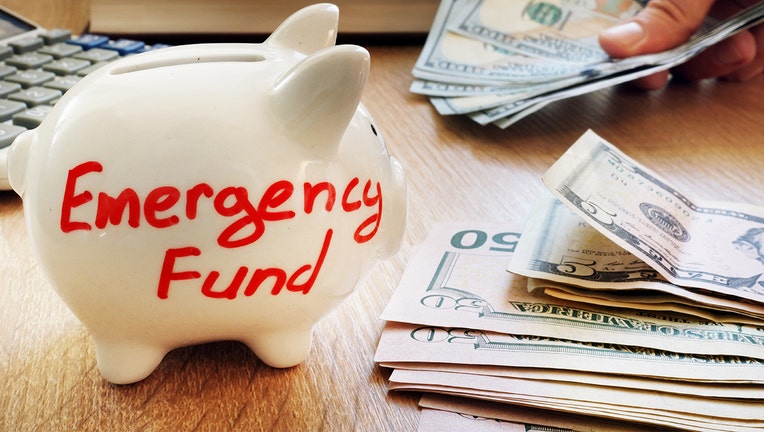Tips on saving $100 or more each month for an emergency fund

Saving for an emergency fund might be easier than you think. You’ll thank yourself later for making the effort. (iStock)
2020 was a rough year for many U.S. households, as a global pandemic and government shutdowns made saving extra money an uphill climb.
Take the issue of emergency savings accounts, which can be tapped to cover expenses when household budgets are tight – if you have the cash to tap into.
The fact is, most Americans don’t.
Data from the Pew Research Center, released in April 2020, reported that only 47% of U.S. adults had enough emergency funds to cover three months of expenses.
If you're looking to cut costs and save money, refinancing may be right for you. Consider visiting Credible today to explore refinance loans for student loans and mortgages.
If you're looking to build an emergency fund, however, there are multiple ways to reach your goal.
How to save $100 every month for emergencies
Emergency funds aren’t a priority for many Americans, because most Americans don’t make emergency savings a priority. That’s unfortunate, as saving for an emergency fund – even if you just set aside$100 per month – really isn’t that difficult.
"One of the biggest mistakes people make when trying to save money each month is trying to save what is left over from their paycheck," said Steve Azoury, financial advisor and owner of Azoury Financial, in Troy, Michigan.
"The secret is to have your savings be automatic when a paycheck is received. Again, an automatic savings system is best to have so you can't spend the money. Also, people forget to budget. Spending time on budgeting and learning investment tips can be a great way to prepare for a life of great financial success."
To get to that $100-per-month in emergency savings (or more), experts recommend several key action steps, with these financial moves at the head of the class.
- Start by tracking expenses
- Leverage a high-yield savings account
- Use automatic savings
- Save found money
1. Start by tracking expenses
To save an extra $100 every month, know where every dollar in your budget is currently going. Try tracking your expenses for a full month to get a better hold on what's coming in and going out, sometimes unnecessarily. The best strategy is to focus on the biggest expenses and go down from there. You may be surprised to see how much you're paying for some things - and aren't paying for others. Sure, unexpected expenses may still arise but by determining the minimum amount needed each month you can start to accurately build your emergency fund.
2. Leverage a high-yield savings account
Stashing money you save in a high-yield account harnesses the power of compound interest.
"Your money will grow at a faster rate than a traditional savings account thanks to compound interest," said Jennifer Barrett, chief education officer at Acorns, a personal financial wellness company in New York, N.Y. "For example, if you deposit $100 and it earns a 10% interest in a year, you'll have $110. If you earn interest the next year, you'll earn it on the bigger number - $110."
3. Use automatic savings
Setting up automatic withdrawals to transfer money from your checking account to a savings account on payday is a great place to start. "That way, you will be saving more without much effort," Barrett said.
Make it easier to automate by scheduling a $25 withdrawal each week instead of $100 each month. Make it a direct deposit toward your savings goals.
"Consistency is the key to financial success," said Nate Nieri, owner of Modern Money Management in San Diego, California. "It will free up your time, increase your savings, and reduce late payments. Plus, mentally it's a lot easier to save $25-per-week vs $100 once-per-month."
4. Save found money
Another way to save for an emergency fund is to redirect to savings what had previously been spent on expenses that no longer need to be covered. "For instance, once a child is potty-trained, parents can immediately begin saving what was being spent on diapers, wipes and diaper creams," said Patricia Roberts, a family finances expert and author of the book "Route 529: A Parent's Guide to Saving for College and Career Training with 529 Plans."
On average, that scenario saves about $60-per-month or $720-per-year. "Likewise, once a child is able to attend school full time, parents can redirect the amount they were spending on daycare expenses to a savings account instead," Roberts said. "This can be approximately $1,000-per-month or $12,000-per-year. This extra money will help in building your emergency savings.
Ready to improve your financial wellbeing? Save money now by choosing a high-yield savings account on Credible.com.

